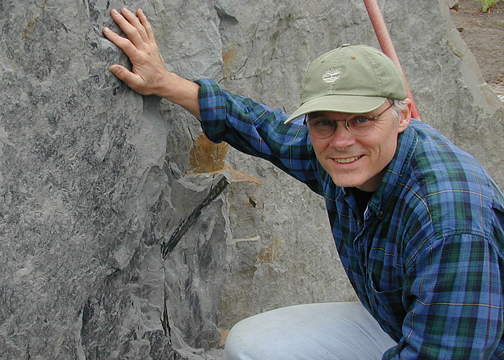Abstract
We are honored to present this special issue of Palaeoentomology in celebration of our dear friend, mentor, and collaborator, David A. Grimaldi (Fig. 1), and on the occasion of his 65th birthday on 22 September 2022. This issue has been compiled in recognition of David’s remarkable ongoing impact on the fields of paleontology, entomology, and evolutionary biology. Throughout his career David has worn an inspirational path across disciplines as an exceptional, thoughtful, and creative scientist. His body of work is vast, punctuated by long-lasting classics that are international in scale and recognition. David is a world authority in multiple arenas; his well-earned expertise ranges from the fossil record and evolutionary history of insects beginning 400 million years ago in the Devonian to the systematics and morphology of notoriously complex drosophilids at the species level. His contributions have helped shape modern palaeoentomology. We are grateful for David’s work and fellowship and look forward to his continued accomplishments.
References
- Grimaldi, D.A. (1987) Phylogenetics and taxonomy of Zygothrica (Diptera: Drosophilidae). Bulletin of the American Museum of Natural History, 186 (2), 103–268.
- Grimaldi, D. (1996) Amber: Window to the past. New York, Abrams/AMNH, 216 pp.
- Grimaldi, D. (2000) Studies on fossils in amber, with particular reference to the Cretaceous of New Jersey. Leiden, Backhuys Publishers, viii+498 pp.
- Grimaldi, D. & Engel, M.S. (2005) Evolution of the insects. Cambridge, Cambridge University Press, xv+755 pp.
- Grimaldi, D.A. & Jaenike, J. (1982) Laboratory culturing of mycophagous drosophilids. Drosophila Information Service, 58, 156–157.
- Grimaldi, D. & Jaenike, J. (1983) The Diptera breeding on skunk cabbage, Symplocarpus foetidus (Araceae). Journal of the New York Entomological Society, 91 (1), 83–89.
- Grimaldi, D.A. & Nascimbene, P.C. (2010) Raritan (New Jersey) amber. In: Penney, D. (Ed.), Fossiliferous amber from the major world deposits. 167–191. Manchester, Siri Scientific Press, 304 pp.
- Jaenike, J., Ausubel, S. & Grimaldi, D.A. (1982) On the evolution of clonal diversity in parthenogenetic earthworms. Pedobiologia, 23 (3-4), 304–310.


